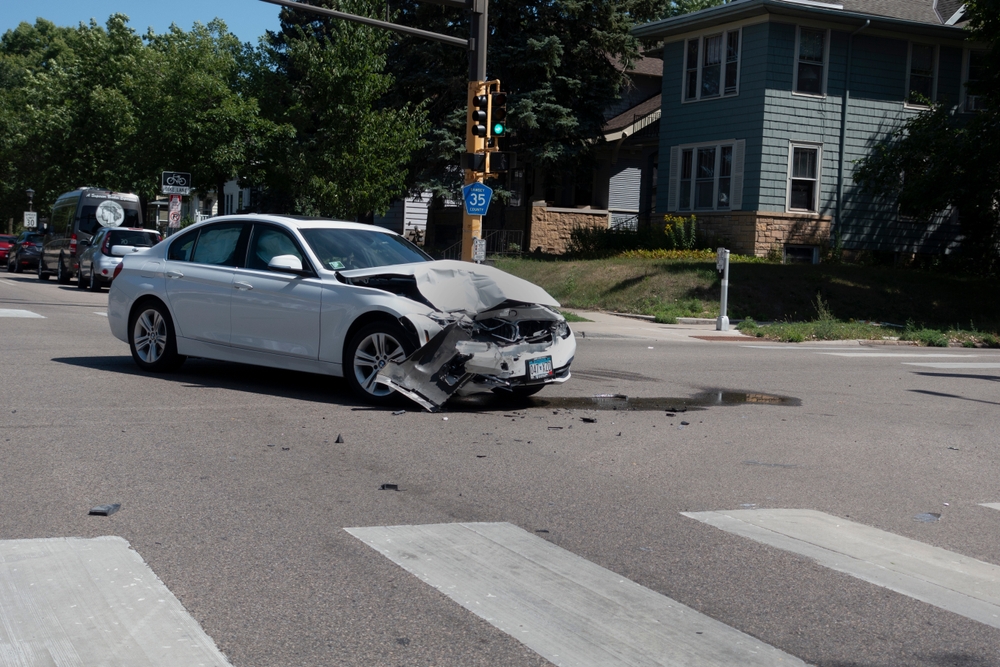
When someone causes a car accident that injures you or a loved one, you’re left sorting through medical bills, missed work, and insurance red tape. You might wonder just how common these motor vehicle crashes really are—and why they keep happening. Looking at motor vehicle accident statistics in Minnesota can shine a light on trends, dangers, and where fault often lies. These numbers don’t just fill reports. They tell real stories about families impacted, lives disrupted, and safety risks across the state.
Read on to learn what the data says about crashes in Minnesota—from the types of accidents to where they happen most often and what usually causes them. If you're thinking about your legal options, these stats can give you context. More importantly, they show that you’re not alone.
If you’ve been in a crash in Minneapolis, Duluth, St. Cloud, Rochester, or anywhere else in the state, you can reach out to a car accident lawyer in Minnesota near you for a free consultation. You may have the right to hold the other driver accountable.
Overall Accident Trends in Minnesota

In 2022, Minnesota reported over 63,000 traffic crashes, resulting in more than 27,000 injuries and nearly 450 deaths. Compared to national trends, Minnesota's fatality rate is generally lower than the U.S. average. But while that may sound like a good thing, it still means hundreds of families are losing loved ones every year on Minnesota roads.
What’s especially concerning is the recent increase in deadly crashes. Between 2019 and 2021, fatal crashes surged by nearly 30%. Speeding, impaired driving, and distracted driving played a major role. Even as cars get safer and roads improve, certain behaviors keep pushing accident numbers back up.
Types of Motor Vehicle Accidents
Motor vehicle accidents aren’t all the same. The type of crash often affects how severe the injuries are and who ends up being held legally responsible.
Car Accidents
Most crashes involve standard passenger vehicles. These include single-vehicle crashes—where a car runs off the road, hits a pole, or slides on ice—and multi-vehicle collisions at intersections or highways. Urban areas like Bloomington, Brooklyn Park, and St. Paul see more fender-benders and T-bone crashes due to higher traffic volume and stop-and-go driving. When to get an attorney for a car accident often depends on the severity of the crash, but reaching out early can protect your rights and improve your chances of recovering full compensation.
Truck and Commercial Vehicle Accidents
When a crash involves a large commercial vehicle, the damage tends to be worse. Semi-trucks and delivery vehicles have larger blind spots and require longer distances in order to stop. Highways like I-94 and I-35 see a lot of these incidents. If a commercial driver makes a careless decision, the aftermath can affect several vehicles at once.
Motorcycle Accidents
Motorcyclists face some of the highest risks. They lack the protection of a car, so even a minor collision can cause life-altering injuries. In 2022, Minnesota saw more than 1,000 motorcycle crashes, with over 80 fatalities. Many of those involved a car that failed to yield or didn’t see the motorcycle in time.
Pedestrian and Bicycle Incidents

Cities like Minneapolis, Duluth, and Rochester promote walking and biking, which is great for health—but it also increases risk. Pedestrians and cyclists often pay the steepest price in a crash. Speeding and distracted driving contribute to many of these incidents, especially in crosswalks or when drivers fail to yield while turning.
Geographic Distribution
Where a crash happens in Minnesota can tell you a lot about the risks drivers face.
Urban vs. Rural Accident Rates
Urban areas like the Twin Cities report more accidents overall, mostly due to population density. However, rural roads often see more deadly crashes, especially two-lane highways without median barriers. In areas like Otter Tail County and Itasca County, high speeds and limited visibility make crashes more severe.
Most Dangerous Counties and Cities
Hennepin County, which includes Minneapolis, consistently tops the list for total number of crashes. Ramsey County, home to St. Paul, isn’t far behind. Outside the metro area, St. Louis County (which includes Duluth) and Olmsted County (home to Rochester) also report high numbers of serious accidents.
High-Risk Roads and Intersections in Minnesota
Some roads and intersections see more than their fair share of crashes. These include:
- I-94 between Minneapolis and St. Cloud
- Hwy 169 in Shakopee and Bloomington
- Snelling Avenue at University Avenue in St. Paul
- Lake Street and Lyndale Avenue in Minneapolis
Sharp turns, heavy traffic, poor lighting, or unclear signage often contribute to these hotspots.
Common Causes of Minnesota Motor Vehicle Accidents
When you look closer at the data, patterns start to emerge. Most crashes don’t just happen. They’re caused by decisions—decisions that often could’ve been avoided.
Distracted Driving
Every year, distracted driving leads to thousands of crashes in Minnesota. Texting, eating, changing the music—it only takes a second for a driver’s attention to drift. In 2022, over 5,000 crashes were linked to distraction, and many likely went unreported.
Impaired Driving
Alcohol and drug use remain stubborn contributors to deadly crashes. Even though public awareness is high, nearly one in four fatal crashes in Minnesota involves a drunk driver. Counties like Mille Lacs and Isanti report higher rates of DWI-related accidents than the state average.
Weather-Related Accidents
Minnesota winters add a whole new level of risk. Snow, ice, and freezing rain create slick roads and reduced visibility. Cities like Moorhead, Bemidji, and Hibbing often see spikes in accidents during storms. Drivers who don’t slow down or fail to maintain safe distance during bad weather often end up causing multi-car pileups.
Speeding and Aggressive Driving
Speeding kills. So does tailgating, weaving through traffic, or failing to yield. In 2022, speeding played a role in over 100 traffic deaths statewide. Even though posted limits are clear, too many drivers treat them like suggestions—especially on highways and rural roads where enforcement can be sparse.
Common Injury Types and Severity
Even when crashes aren’t fatal, the damage can still be life-altering. Whiplash, broken bones, concussions, and back injuries are among the most frequently reported outcomes. Intersection collisions, particularly in city areas like Eden Prairie or Maple Grove, often result in side-impact injuries that affect the chest, ribs, or spine.
More severe accidents, especially those involving motorcycles or large trucks, can lead to traumatic brain injuries or spinal cord damage. Victims often need long-term care and rehabilitation that insurance companies try to minimize or deny.
Long-Term Disability Rates
Data shows that thousands of Minnesotans suffer injuries that lead to long-term disability every year. Many of these individuals struggle to return to work or daily life. In these cases, holding the at-fault party accountable becomes not just about medical bills, but about a person’s future and quality of life.
Economic Impact
Motor vehicle accidents don’t just hurt the people directly involved—they also place a heavy financial burden on families and communities. Overall, the total economic cost of traffic accidents in Minnesota was over $2.2 billion in one recent year.
Medical Costs Associated with Accidents
Treating injuries from a crash can cost tens of thousands of dollars—or more. Emergency care, surgeries, rehabilitation, follow-up appointments, and prescriptions quickly add up. Even if insurance covers some expenses, deductibles, co-pays, and uncovered services leave many families in financial distress.
Lost Wages and Productivity
When someone can’t work after a crash—whether for weeks or permanently—the economic ripple effect reaches far. Missed income not only affects the injured person but also their household. In 2022 alone, Minnesotans lost millions of dollars in wages due to time away from work after accidents.
Property Damage Statistics
Beyond personal injury, vehicle damage is a huge part of the economic equation. The average cost to repair a vehicle after a collision in Minnesota ranges from $3,000 to $6,000 depending on the damage. For totaled vehicles, insurance companies often undervalue replacements, leaving people without reliable transportation. In rural communities like Fergus Falls or Grand Rapids, that can mean being cut off from work, school, or healthcare. My accident settlement taking so long can be a sign of insurance delays, undervaluation disputes, or the need for additional documentation—issues a lawyer can help resolve.
Recent Legislative Changes
Minnesota continues to update traffic laws to address changing road conditions, driver behavior, and new technology.
New Traffic Laws in Minnesota
Recent updates to Minnesota traffic laws include tougher penalties for distracted driving and expanded hands-free requirements. Since the Hands-Free Law took effect in 2019, enforcement has led to more than 20,000 citations per year, showing how widespread the problem was—and still is.
Additionally, changes in impaired driving enforcement have increased roadside drug testing capabilities, reflecting the growing role of cannabis and prescription drugs in crash reports.
Impact of Legislation on Accident Rates
Some laws show early signs of success. For example, preliminary data suggests a drop in handheld phone use while driving. However, enforcement alone can’t fully eliminate reckless driving. Crashes involving speeding and aggressive behavior haven’t dropped as much, especially in counties like Anoka, Dakota, and Stearns.
Pending Legislative Initiatives
Lawmakers continue to explore new legislation aimed at reducing crashes, such as:
- Lowering speed limits in residential areas
- Requiring more rigorous driver education for teens
- Expanding red-light camera pilot programs
Public debate remains active, especially around privacy concerns and how to fairly enforce new rules. But the goal remains the same: fewer crashes, fewer injuries, and safer roads for everyone.
Legal Implications for Accident Victims
Crash victims often have questions about their rights, especially when injuries affect their ability to work or function normally.
Minnesota’s No-Fault Insurance System
Minnesota uses a no-fault system, meaning your own insurance pays for medical bills and lost wages up to a certain limit, no matter who caused the crash. This system helps process basic claims quickly, but it also limits what you can recover through insurance alone.
When Victims Can Pursue Personal Injury Claims

If your injuries are serious enough—such as a permanent injury, long-term disability, or more than $4,000 in medical expenses—you can step outside the no-fault system and file a personal injury claim against the at-fault driver. This lets you seek compensation for additional losses like pain and suffering, future medical costs, or long-term care.
Insurance companies often downplay the seriousness of injuries or delay payments. If the other party or their insurer refuses to take responsibility, you may need to take legal action to hold them accountable.
Statute of Limitations for Accident Claims
In Minnesota, the clock starts ticking fast. You typically have six years from the date of the crash to file a lawsuit for injuries. For wrongful death claims, the limit is usually three years. Missing these deadlines can block you from seeking any recovery at all, even if the other party was clearly at fault.
Prevention and Safety Initiatives
While accident statistics can be grim, Minnesota continues to push forward with efforts to reduce crashes and save lives. From state programs to community campaigns, multiple groups are working to make the roads safer.
State-Sponsored Safety Programs
The Minnesota Office of Traffic Safety (OTS) runs several programs aimed at reducing injuries and fatalities. Campaigns like “Toward Zero Deaths (TZD)” bring together law enforcement, engineers, educators, and emergency responders to identify risk areas and create targeted solutions.
Some of the most effective strategies include:
- High-visibility DUI enforcement during holidays
- Extra patrols in known speeding zones
- School zone safety upgrades
- Seatbelt use education
Since the start of the TZD initiative, Minnesota has seen a long-term drop in traffic fatalities, although recent increases in risky driving behaviors have slowed that progress.
Technological Advances in Vehicle Safety
Automakers have also played a role in reducing crash severity. Newer vehicles sold across Minnesota often come equipped with advanced driver assistance systems (ADAS) like automatic emergency braking, lane-keeping alerts, and blind spot detection. These features can’t prevent every crash, but they can reduce impact speed or help drivers avoid collisions entirely.
In areas like Burnsville, Woodbury, and Maplewood, newer cars make up a growing share of the vehicle population. As these systems become more common, they may help lower injury and fatality rates.
Community Initiatives
Local organizations, schools, and city governments also contribute to safer streets. Cities like Edina and Bloomington have implemented Vision Zero plans, aimed at eliminating traffic deaths through better road design, increased enforcement, and public outreach.
Bike lanes, pedestrian refuge islands, better crosswalk lighting, and roundabouts have been introduced in several Minnesota communities to cut down on high-risk traffic points. These changes are often data-driven, based on where crashes tend to cluster year after year.
Contact an Experienced Motor Vehicle Accident Lawyer Today
Minnesota's motor vehicle accident statistics show a troubling trend: while safety efforts have grown, crashes still injure and kill thousands each year. Urban areas like Minneapolis and St. Paul see frequent accidents tied to congestion and distraction, while rural areas suffer from higher fatality rates tied to speed, isolation, and poor visibility. Weather, impaired driving, and reckless behavior all play major roles in these incidents.
If you suffered injuries or lost a loved one in a vehicle crash someone else caused, the Minnesota personal injury attorneys at Fields Injury Law are here for you. We offer free consultations, and we don’t charge any fees unless we help you recover compensation. Contact us today to get started.

